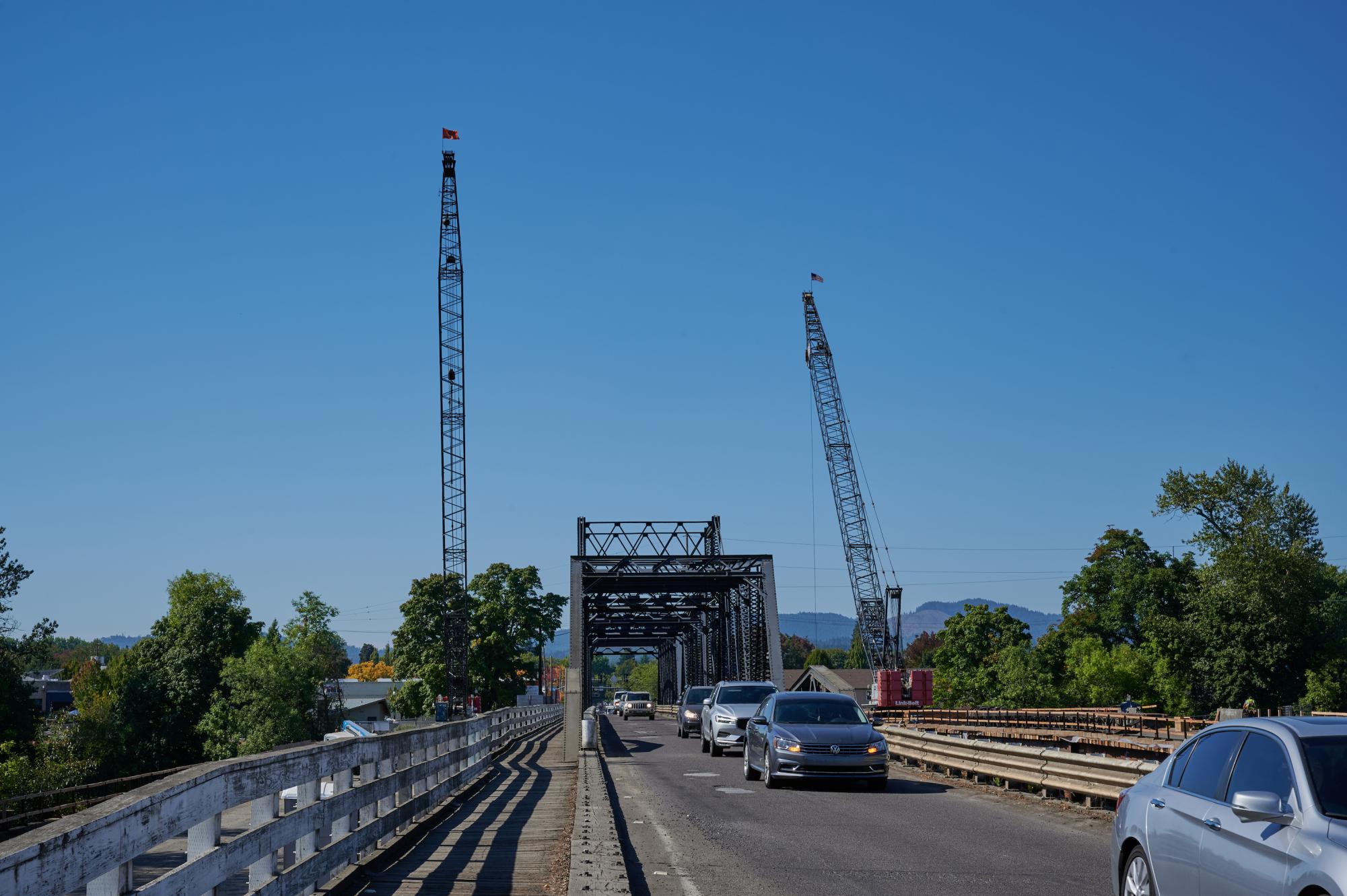Who wants to be stuck on an unstable bridge in the event of an earthquake? No one! As it turns out, this is more probable here in the Pacific Northwest and Corvallis’ Van Buren Bridge is not equipped to withstand an earthquake.
As oceanic plates converge and build stress, the plates become more prone to slips that create earthquakes. There are several faults in the Pacific Northwest that can cause very damaging earthquakes and it’s important to be prepared.
The construction of the Van Buren Bridge will bring benefits not only to students but to anyone in the area and will be steady in the event of an earthquake.
The Van Buren Bridge is only one of several projects to improve infrastructure, as part of the Oregon Seismic Lifelines Identification Project. Mindy McCartt, public information officer at the Oregon Department of Transportation says it is the policy of the State of Oregon to provide a secure network of streets, highways and bridges that will facilitate emergency services responses.
McCartt says the Van Buren Bridge project aims to provide the public with a “safe and earthquake ready bridge” and that the existing bridge is “considered seismically vulnerable and will be removed and replaced.”
Additionally, reconstruction will include two eastbound lanes, a bike lane and a protected bike and pedestrian path. It will also include improvements to the intersection of Van Buren Avenue and NW First Street, where a new traffic signal will replace the current flashing yellow pedestrian crossing light.
“Since 2004, there have been numerous studies associated with the project. These include environmental baseline reports, bridge analysis, traffic analysis and detailed design reports for the function of the bridge,” McCartt said.
Next to the existing Van Buren Bridge, a short-term construction bridge is near completion, which will allow construction vehicles to cross the river but will not be safe for traffic. The new Van Buren Bridge will be used as a detour bridge that will be complete and ready for traffic before the end of the year.
McCartt said that once the traffic is active on the detour bridge, the removal of the existing bridge can begin and the construction of the new permanent bridge will begin in early 2024 and continue through most of 2025. It is expected that traffic will be on the new bridge by late spring or early summer of that year.
According to the ODOT’s website, “The bridge is a bottleneck to travelers and freight as it is narrow, has low clearance and is currently weight restricted to 12 tons.”
McCartt mentions the construction will bring minimal congestion as the existing bridge will remain open up until the new temporary bridge is finished.
Recent graduate, Sabrina Stover agrees and said that the current bridge was “pretty congested during peak times in the mornings or around 5 p.m. when everyone left campus.”
Stover also said she was glad to hear a new bridge construction was under place as “Corvallis very much needed the upgrade.”












































































































